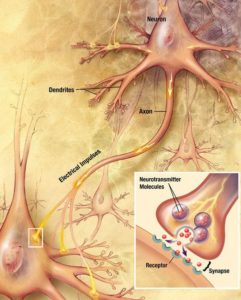
Snapshot: What is prosody?
Speech not only consists of the words we say, but how we say them. That “how” is what is called prosody: the pitch, loudness, and timing of speech. The term Read More…
NAF has launched a petition on Change.org calling on the FDA to prioritize treatment options for rare diseases with urgent unmet needs, including Spinocerebellar Ataxia (SCA).
SIGN THE PETITION
A collection of resources for individuals and families affected by Spinocerebellar Ataxia Type 27B (SCA27B).
Spinocerebellar Ataxia type 27B (SCA27B) is caused by a genetic mutation that is passed on from parents to their children. For complete information about symptoms, diagnosis, and treatment of Ataxia, visit our What is Ataxia? page. This page contains NAF’s resources that are specific to SCA27B.
Sign up for our mailing list to stay up-to-date on Ataxia news.
Presented by Dr. Bernard Brais and Dr. David Pellerin
This webinar covers the causes and symptoms of SCA27B, the typical diagnostic journey for those affected, and what to expect for clinical care.
Presented by Dr. Bernard Brais and Dr. David Pellerin
This webinar covers how SCA27B is studied and gives an overview of the current state of research and drug development for the disease.
NAF offers webinars on many topics to help you live better with Ataxia. Visit www.ataxia.org/webinars to find other helpful presentations.
SCA27B is a rare neurodegenerative disorder. As the cause of SCA27B was only discovered in 2022, there remains a lot we do not know about this condition, including how common it is. From initial research, SCA27B is found across the globe, with high prevalence rates in French Canadians.
As more people are diagnosed with SCA27B and more research is completed, we will have a better understanding of this disorder. This page will be updated with new information as it becomes available.
Like many other forms of Ataxia, SCA27B is marked by incoordination. In fact, the word Ataxia means incoordination. In most cases, the first symptoms of SCA27B are unsteady gait, stumbling, and imbalance. Other common symptoms include vision problems (double vision, bouncy vision, or blurry vision), poor hand coordination, vertigo or dizziness, and difficulty speaking. Less common symptoms include swallowing difficulties, tremors, urinary urgency, stiff or rigid muscles, and numbness or pain in your limbs.
In about 50% of cases, SCA27B symptoms begin as episodes – where people experience bouts of ataxia lasting from minutes to days, but then regain their sense of balance and other symptoms go away. Over time, episodes increase to a more permanent form of ataxia, where symptoms are constant. SCA27B ataxia episodes can be triggered by alcohol, physical activity, and caffeine.
Age at onset of SCA27B symptoms usually ranges from 50-80 years old. However, symptoms can occur as early as 30 years old and as late as 90 years old. The severity of symptoms also varies considerably, even within families.
SCA27B usually progresses very slowly. Most people with SCA27B will eventually use upright walking aids such as a cane or rollator, however, most do not require the use of wheelchairs. Lifespan generally is not shortened by the disease. Treatments such as physiotherapy, occupational therapy, and speech-language therapy can significantly improve the lives of people with SCA27B.
SCA27B is a genetic disorder which means that it is an inherited disease. The abnormal gene responsible for this disease is passed along from generation to generation by family members who carry it. Genetic diseases like SCA27B occur when one of the body’s 20,000 genes does not work properly. Genes are microscopic structures within the cells of our bodies that contain instructions for every feature a person inherits from his or her parents.
SCA27B is an autosomal dominant disease which means that individuals of either sex are equally likely to inherit the gene and develop the disease. Each child of a person with SCA27B has a 50 percent chance of inheriting the gene that causes SCA27B.
In the case of SCA27B, it is caused by a mutation called a GAA repeat expansion in the FGF14 gene. Whether or not you develop SCA27B depends on how many repeats you have.
GAA repeat numbers can grow or shrink between generations. This can make it seem like ataxia ‘skips’ a generation, if the GAA repeat number shrinks below the number needed to cause SCA27B. If in the next generation, the GAA repeat number grows to over 300 again, then people will develop symptoms. GAA repeat numbers are more likely to grow when passed to children by their mothers. GAA repeat numbers are more likely to shrink when passed to children by their fathers. You can learn more about the genetics of SCA27B at the SCA27B for Me website.
Gene tests can be performed for diagnostic purposes to determine what kind of Ataxia is within a person or family. Genetic testing also can be done, in some circumstances, even before there are symptoms to determine whether a person carries the abnormal gene or genes that cause Ataxia. This is called predictive or presymptomatic testing. A gene test also can be used to determine whether a fetus has an abnormal Ataxia gene. This is called prenatal testing. Anyone who is considering a predictive or prenatal test should consult with a genetic counselor to discuss the reasons for the test, the possible outcomes, and how those outcomes might affect the person emotionally, medically, or socially.
A neurologic examination can determine whether a person has symptoms typical of SCA27B. This suspected diagnosis is then confirmed through brain imaging, such as MRI, and genetic testing to detect the presence of the abnormal gene that causes SCA27B. A neurologist is often the most helpful specialist in recognizing symptoms and diagnosing the disease that causes Ataxia.
SCA27B, one of the newest identified forms of Hereditary Ataxia, is anticipated to be a highly prevalent type of Ataxia.
In late May 2023, the University of Chicago Genetics Lab announced a CLIA-certified genetic test is now available.
On December 1, 2023, Variantyx Inc. announced an expansion in their Genomic Unity® line of tests. This includes the capability to test for the mutation which causes SCA27B. To learn more about SCA27B testing from Variantyx, please read their press release or visit their website at ww.variantyx.com.
SCAsource provides Ataxia research news, directly from researchers to the Ataxia community. Visit SCAsource to see their full collection. Here is a collection of articles related to SCA27B.

Speech not only consists of the words we say, but how we say them. That “how” is what is called prosody: the pitch, loudness, and timing of speech. The term Read More…

Written by Dr. Hayley McLoughlin and Dr. Sharan Srinivasan Edited by Dr. Celeste Suart A novel genetic sequencing technology uncovered numerous familial ataxia cases linked to a unique mutation in Read More…

Nystagmus, also known as ocular ataxia, is a term that refers to uncontrollable eye movement- usually a repetitive cycle of slow movement in a specific direction followed by a quick Read More…

To repurpose drugs is to find new ways that they can be applied to treat other conditions and illnesses. Although our knowledge of diseases is greater than ever before, the Read More…

Coordination of smooth and effective movements is essential in daily tasks, such as speaking or walking. The ability to successfully orchestrate these movements is commonly referred to as “motor coordination”. Read More…

One of the most important features of neurons (Purkinje cells, for example), is that they are capable of electrical communication. Think of the last time you saw a TV intro Read More…
SCA27B Zoom Support Group
Hosted by SCA27b Ataxia Foundation; Mediated by Mary Hogan, Director
Please contact Mary at sca27b@gmail.com for information on an upcoming meeting and the Zoom link.
Our generous donors help us fund promising Ataxia research and offer support services to people with Ataxia. Your gift today will help us continue to deliver on our mission to improve the lives of persons affected by Ataxia.
Join for FREE today! Become a part of the community that is working together to find a cure. As a member you will receive access to the latest Ataxia news with our e-newsletter and Generations publication.
